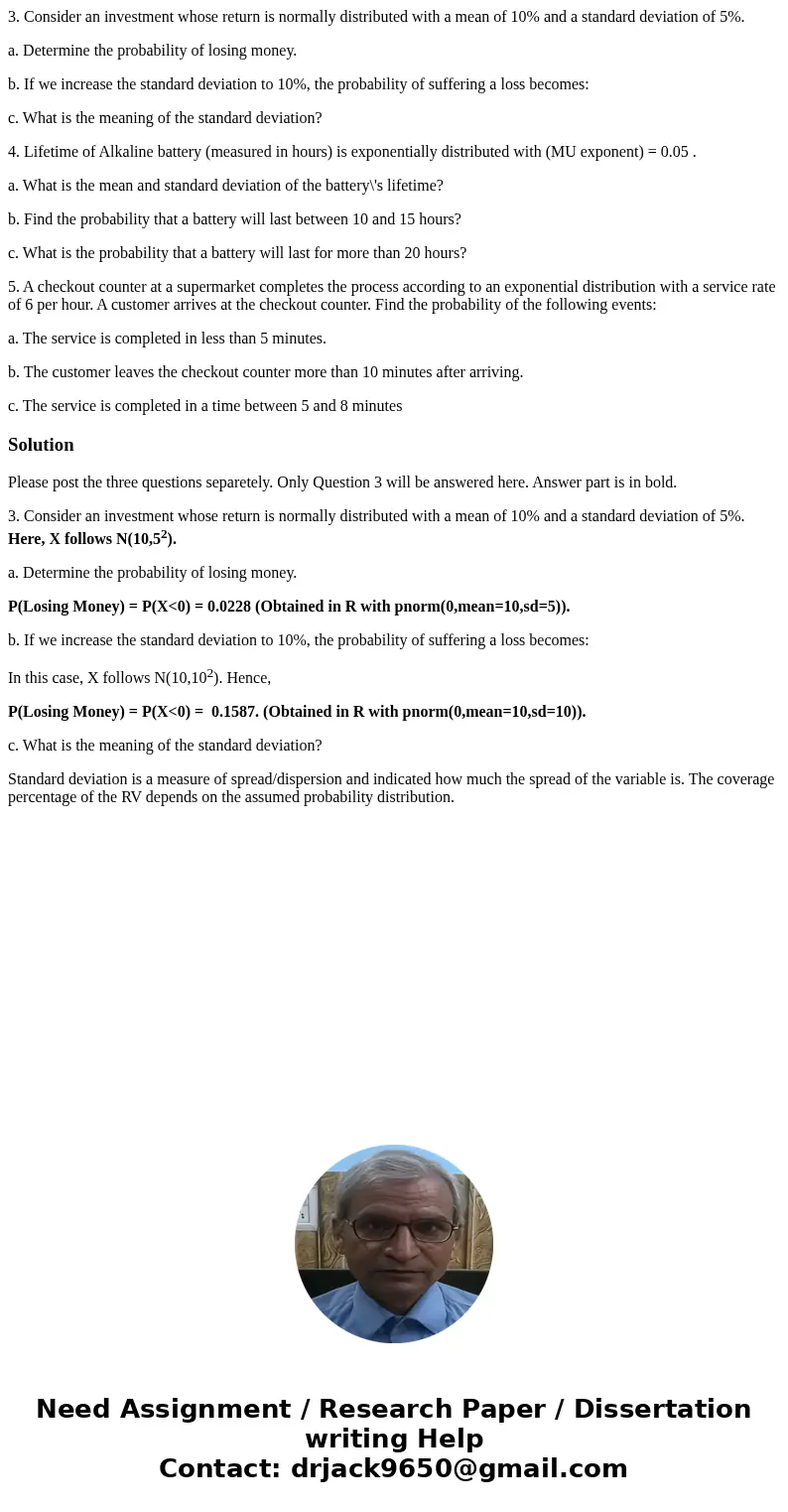3 Consider an investment whose return is normally distribute
3. Consider an investment whose return is normally distributed with a mean of 10% and a standard deviation of 5%.
a. Determine the probability of losing money.
b. If we increase the standard deviation to 10%, the probability of suffering a loss becomes:
c. What is the meaning of the standard deviation?
4. Lifetime of Alkaline battery (measured in hours) is exponentially distributed with (MU exponent) = 0.05 .
a. What is the mean and standard deviation of the battery\'s lifetime?
b. Find the probability that a battery will last between 10 and 15 hours?
c. What is the probability that a battery will last for more than 20 hours?
5. A checkout counter at a supermarket completes the process according to an exponential distribution with a service rate of 6 per hour. A customer arrives at the checkout counter. Find the probability of the following events:
a. The service is completed in less than 5 minutes.
b. The customer leaves the checkout counter more than 10 minutes after arriving.
c. The service is completed in a time between 5 and 8 minutes
Solution
Please post the three questions separetely. Only Question 3 will be answered here. Answer part is in bold.
3. Consider an investment whose return is normally distributed with a mean of 10% and a standard deviation of 5%. Here, X follows N(10,52).
a. Determine the probability of losing money.
P(Losing Money) = P(X<0) = 0.0228 (Obtained in R with pnorm(0,mean=10,sd=5)).
b. If we increase the standard deviation to 10%, the probability of suffering a loss becomes:
In this case, X follows N(10,102). Hence,
P(Losing Money) = P(X<0) = 0.1587. (Obtained in R with pnorm(0,mean=10,sd=10)).
c. What is the meaning of the standard deviation?
Standard deviation is a measure of spread/dispersion and indicated how much the spread of the variable is. The coverage percentage of the RV depends on the assumed probability distribution.

 Homework Sourse
Homework Sourse